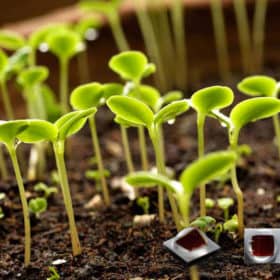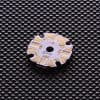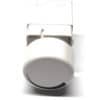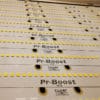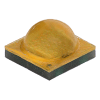Led Technology
Horticultural Led’s Are we there yet?
The rapid evolving of Horticultural lighting has most recently been driven by the introduction of led’s into a market long dominated by the incandescent lamp. I say rapid but over a relatively short period of time. The crushing cost of energy and a world facing food security issues, only heightened by recent global tensions has growers looking for solutions that reduce their energy footprint and costs of production. That journey for Led’s has at times not been without hiccups. The early efforts using the Red/Blue led array, commonly known as ‘burple’ has some success based on the notion that plants only needed red and blue as a workable spectrum. It had its issues as a very unpleasant light for humans to work under, magenta literally has you seeing green and the cost of production made China the logical supply source. A proclivity to overdrive and under cool what was still an early led iteration, tested both the fan technology of the time and growers’ patience. Nonetheless the signs were there.

The COB (Chip on board)Led forever changed the stakes by producing light levels not unlike CMH and other high power incandescent lamps and they produced a white colour making them a pleasure to work under. The ascension of a light source that provided all the light needed at efficiency levels, exceeding 100 lpw, not possible with incandescent was a game changer. However, issues remained, the ability to cram vast arrays of led die in close proximity to produce that amount of light, well that old chestnut heat was back. It placed a ceiling on efficacy and is a difficult light source to evenly distribute in a grower’s row. The answer lay in a deconstruction of the vast arrays into hundreds or thousands of low cost mid power led’s spread out across large PCB’s lifting efficacy beyond 200 LPW and providing canopy coverage unmatched by the COB.
The Mid Power array’s in panel or strip form now dominate the grow light market, the die separation has all but defeated the thermal issues, led to massive gains in efficiency, only limited by led technology itself, Led PCB’s/Fixtures can be easily shaped to improve coverage and is relatively cost effective. But wait there’s more. It is now possible to blend these led’s and totally control the spectrum of light. This key feature leads us to today where the current crop of products typically blend white and deep red led’s. This not only is an effective grow spectrum, but the use of highly efficient red has increased the overall fixture efficiency by a further notch, so are we there yet?

Not quite, we need to delve into the minutia a little. If we are to assume that white and red get us to a higher plane, where is further improvement possible? White LED is a misnomer, that is to say it is a blue led as a pump that uses Phosphor to up convert to white and here is the rub, phosphor typically contains Red/Green and Blue(RGB) to produce white and that percentage of blend in phosphors is how we create different variants of white, the most efficient led’s have the least amount of red ie Cool white because the up convert is least efficient as the percentage of red increases, hopefully you see where Im going with this. If an efficient grow light uses a white and red led blend, why does the white led need any red component at all, and the truth shall set you free. Ok, hang on we cant get white without RGB but we can reduce the red to its lowest possible level. The benefit of this is an heavy Blue/Green ratio that further lifts the efficiency of that led

The reduction in red in white Led’s for horticulture is a thing, products that use this approach include the Samsung 301Evo, Osram Horti White, Nichia Hortisolis and most recently Cree Photophyll Select. So lets consider the Photophyll Select as a model, it enables high efficiency + broad spectrum with just 2 LED channels and increases system efficiency up to 3.25 PPF/W or 6% higher than standard White + Red designs

One of the key features of Photophyll Select is a fixed red of 20% across the three bins and variants of the Green/Blue ratio.


Of course its possible the subject grow may be mainly vegetative in nature and therefore does not require red/white blends however the possibilities of a red reduced, highly efficient led has advantages outside a White/Red colour solution and only advances the cause of both efficiency and spectral nuance. If we are not there yet, it feels like we are a little closer

Cree Photophyll Select is in early prerelease and will be available in both Power(XPG-3) and Mid Power(G Class 2835)


